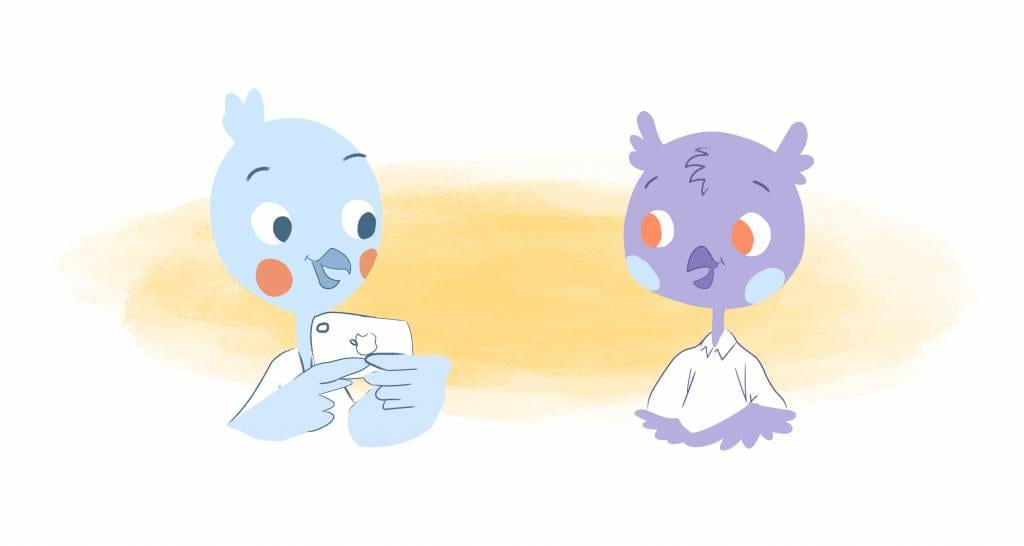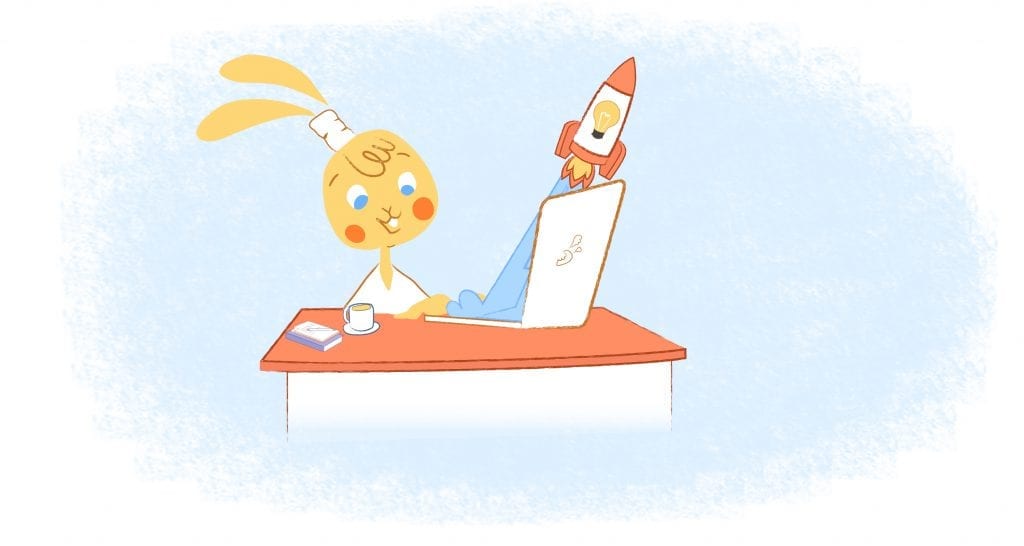

As a business owner one of your main goals should to close deals faster so that you can increase sales. That’s always easier said than done — especially when you’ve tried every hack out there and sales are still stagnant.
Harness some personal power — and pass it along.
Thankfully, you can harness the power of the following nine psychological triggers to have customers rushing to purchase your goods or services.
1. Reciprocity.
The concept of reciprocity is a better simple one to grasp. Basically, it’s the idea that if you scratch someone’s back, they’ll scratch yours. Brian Tracy states that this is often considered by “many to be the most powerful law of human nature.”
Tracy goes on to say that there are two type of reciprocation:
Emotional reciprocation.
Emotional reciprocity is where you make someone else feel good. This could be simply thanking a customer for their support. In return, they’ll feel obligated to reciprocate.
Material or financial reciprocation.
This type of help is where you do something nice for others — such as offering them a free gift with their purchase. “We have a deep psychological need to be even with others,” explains Tracy. “If a person does something for you, we feel a need to get even by doing something nice in return.”
One of the more famous studies on the law of reciprocity involved waiters giving restaurant customers mints at the end of their meals. When mints provided to guests with their checks, tips increased by three percent.
If two mints were given and the customers were asked, “Would anyone like some mints before they leave?” Tips increased by 14 percent.
However, if the waiter gave mints — then returned with another set of mints — and said something on the lines of “For you nice people, here’s an extra mint,” tips increased by an impressive 21 percent.
So, how will you apply the law of reciprocity to close more deals?
Here’s a couple of ideas:
Share exclusive content.
For example, you could offer a free eBook in exchange for an email address or instructional guide on how to use your product or service.
Provide a free gift with each purchase.
This could a complimentary gift with each purchase. If you sold coffee, then maybe advertise that with each purchase customers will receive a free coffee scoop or mug.
Surprise your customers.
In this case, you don’t announce what the customers will receive. It could be a coupon or an additional freebie with each purchase.
2. Curiosity.
This is based on the “information gap theory of curiosity.” This theory was developed by George Loewenstein of Carnegie-Mellon in the early 90s.
Oh no! I don’t know this. Do I look stupid?
Loewenstein defines this concept as, “an innate human behavior that’s triggered when people feel there is a gap between what they know and what they want to know.”
In other words, when we feel a “gap,” it feels like a mental itch that we have to scratch.
Then there is YOU to the rescue — with the answer.
When you pique curiosity, your prospects and even existing customers feel compelled to take action. This could be opening an email, reading a blog post, or contacting you for more information.
What are psychological triggers?
The reason, as Derek Halpern from Social and psychological Triggers explains is that — “when you create a gap between what people know, and what people want to know, they feel compelled to fill that gap.”
Halpern suggests that to achieve this you, “write curiosity-based introductory sentences” for your emails, blog posts, landing pages, sales letters, and even your cold calls/emails.
Here’s the formula that Halpern uses to make your customers curious:
[New, Cool, and/or Hopefully Remarkable Thing] + [Desirable Outcome] = [Curious Reader / Viewer]
3. Commitment and consistency.
In his famous book, Influence: The Psychology of Persuasion, when relating to psychological triggers, Dr. Robert Cialdini describes the Principle of Consistency as: “Once people make a decision, takes a stand or performs an action, they will face an interpersonal pressure to behave in a consistent manner with what they have said or done previously.”
How can you help your customer to feel like they need to be fair?
Let’s say that you’re at the grocery store and are offered a free sample of a new brand of cheese. You may feel inclined to then purchase the cheese because you already tried it. You’ve committed to enjoying the cheese. It’s only fair for you to purchase some to enjoy at home.
Companies like Warby Parker have perfected this with their Home Try-On Program.
You order samples of the glasses you’re interested in purchasing and the company sends you a box containing the glasses. There’s no commitment to buy any of the frames and you can return the box for free. However, the company knows that as soon as you open the box you have a commitment to purchase at least one set of frames.
4. Use a decoy.
Let’s say that you’re selling two subscription levels on your website. One level is expensive and comes with all the bells and whistles. The other level is less expensive, meaning customers are only getting the bare minimum. This becomes a tough decision for your customers.
What makes the decision difficult?
One on hand they could spend less money, but they won’t be getting as much. However, if they want to get all of the benefits of the pricier subscription level — they’ll have to spend more money.
To encourage more subscription sales you could offer a third option known as a decoy.
The decoy is priced closely to your more subscription level. However, customers are actually getting more bang for their buck.
Here’s a famous example of the “decoy effect” used by The Economist.
The Economist offered three options for subscribers — a digital subscription for $59, a print subscription for $125, and a print + digital subscription at $125.
If you have to choose one plan, I bet you would go with the third option. It just makes more sense to get both the print and digital subscriptions for the same price as the print-only subscription model.
This theory of the decoy effect has been tested.
To verify this, behavioral economist Dan Ariely first asked his students which plan they would purchase. 68 percent of the students preferred the digital option — while 32 percent selected the print option.
How about that third option?
When offered the third option,16 percent chose the digital-only — none for the print only — and a whooping 84 percent selected the combo. The reason? Your brain thinks, “Hey that’s a great deal! I get more than any other individual plan and it’s no more expensive than the print-only. So, the combo plan is the best.”
5. FOMO.
Have you ever received an email notifying you that there’s a buy one get one offer that expires at midnight? How likely are you going to jump on that deal?
The fear of missing out can be a powerful tactic in encouraging your prospects and customers to take immediate action.
First coined by consumer behavior expert Dan Herman in 1996, FOMO is effective because it’s a psychological stress trigger that we experience whenever we believe that we’re missing out on something or being excluded.
Besides offering limited offers, like a deal that expires in a specific amount of time, you can also create FOMO through social media. For instance, you could post pictures or videos of people enjoying your products or services. When others see how these people are having so much fun, they also want to get in on the action.
6. Social proof.
Cialdini writes in, Influence: The Psychology of Persuasion, that, “If you can get people who are similar to the person you’re trying to persuade to speak on your behalf — it’s a lot easier for you than if you have to try to hammer your message one more time into a reticent mind.”
According to Nielsen, 83 percent of consumers trust product recommendations from their friends and family. You may want to start collecting testimonials from previous customers and influencers. You can then share them on your website, emails, or social media posts as a way to show your credibility.
7. Stand for something.
Nike recently made the controversial decision to star Colin Kaepernick in a new campaign. Some customers weren’t happy about the move. Others, however, supported the decision which resulted in a big boost of sales for the company.
I don’t want this to become a debate about whether the decision was right, wrong — or if Nike “cooked” the books. My point, is this was a calculated move by Nike.
They realized that the campaign would invoke emotion — which would turn-off some customers — but resonate with many more.
It’s been found that customers aren’t really loyal these days. Instead, customers are more loyal to what companies stand for. That’s how brands like Zappos and TOMS won fans over. They’ve both created a culture of standing-up for what they believed in. For example, Zappos doesn’t sell shoes. They’re a customer service company that just so happens to sell shoes.
You can accomplish this by clearly sharing your company’s values and “putting your money where you mouth is.”
8. Authority.
The idea behind this concept is “that people follow the lead of credible, knowledgeable experts.” Physiotherapists are able to convince their patients to comply with a recommended exercise programs by displaying their medical diplomas on their walls.
Realtors increased the number of property appraisals and subsequent contracts “by arranging for reception staff who answered customer inquiries to first mention their colleagues’ credentials and expertise.”
So, how will you use authority to boost sales?
Maybe demonstrate that you’re an authority figure in your industry by writing for leading publications. If your business has won an award, proudly display that information on your website or storefront. You could also team-up with others, such as influencers and other experts.
9. Offer less.
I recently had to order new business cards because some of my contact information. I visited Vistaprint and was suddenly overwhelmed. There were thousands of options I could choose from — such as rounded or square edges to the material being used to the actual design. I got it. They want you to be able to personalize the business cards. At the moment when I was winding down for the day — it was too much for me.
I’m not an oddity. I was experiencing “analysis paralysis.”
The gist of this concept is that if you give people too many decisions, they won’t choose anything.
Sometimes this works just fine. If you have niche then you would obviously only sell products or services that fits in your niche. If you sold athletic gear — then you wouldn’t also sell music equipment. What if you do offer a wide-variety of services or products? You could try “chunking.”
What is chunking?
You see chunking at the grocery store — and on eCommerce sites like Amazon. Instead of just telling customers, “here’s everything we sell, go buy it,” you create aisles or categories.
Categories makes the decision process much easier. Instead of being overwhelmed with everything the store is selling — the categories put everything that is alike — together.
Let’s say that you need to grab stuff for lunch this week. You would grab the bread in that aisle, the lunchmeat in the deli, and the condiments in the mayo aisle.
To run a store — and even a business without chunking — and batching — would be kind-of like running through the store like a maniac.











Howie Jones
My name is Howie and I'm a Customer Success Manager at Calendar. I like to ensure our customers get the best experience using our product. If you have questions email me howie at calendar.com